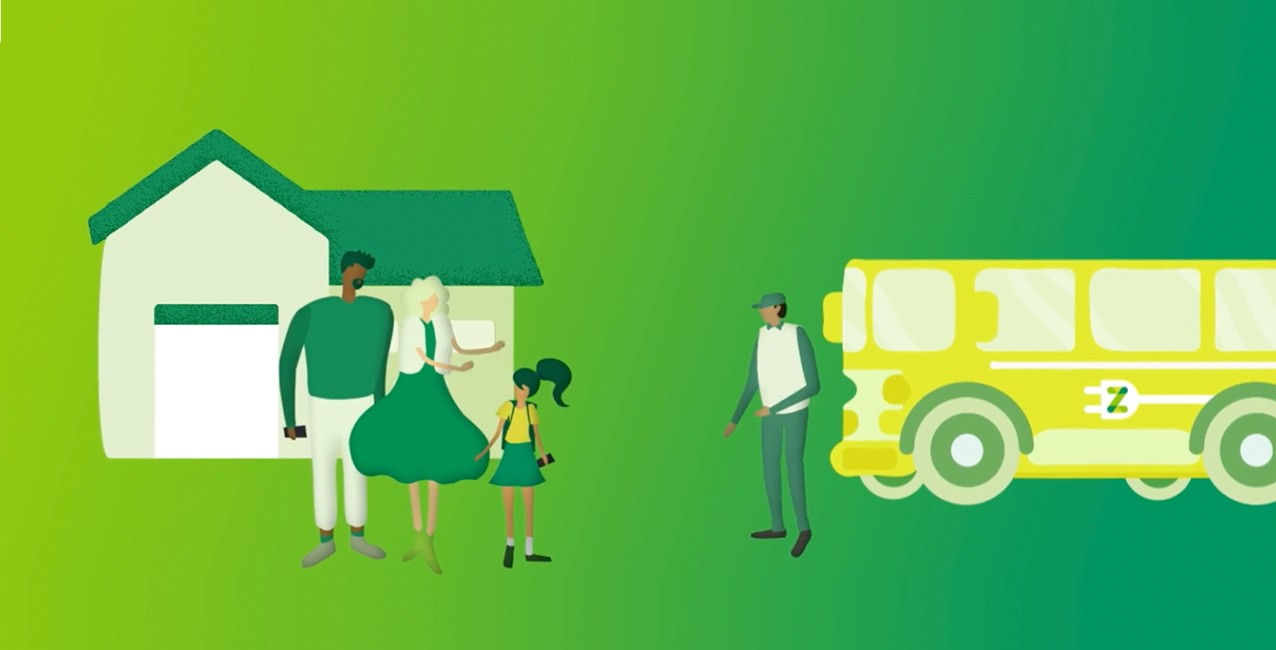
Transforming the Most Inflexible Part of Our School System
By Bringing New Efficiencies to the $28 Billion School Transportation Industry, We Can Enhance Student Well-Being While Saving Our Planet
This post is part of a series that dives into our vision for reimagining student transportation.
With their hulking frames, diesel fumes and vinyl seats, yellow school buses certainly aren’t luxury vehicles. Yet busing constitutes school districts’ second-highest line item, after salaries. Because the system is riddled with inefficiencies, though, schools and communities are getting a paltry return on their investment.
By fully modernizing student transportation, we can transform this behemoth industry into a model of efficiency, while at the same time prioritizing student safety, learning and overall well-being. An efficient school transportation system can generate enormous savings in money, time and energy—benefiting schools, parents, students, communities and our shared natural environment.
Saving money and time for schools
Studies have found that since the 1980s, the cost of student transportation has increased by 75% per student, on average. The contribution from state budgets has not kept pace, forcing many local districts to earmark a growing share of their funds for transportation. Any savings gained through busing efficiencies, then, can be put directly into the classroom to boost student achievement.
Currently, most school bus routes are designed using opaque, outmoded logistics systems and a one-vehicle-size-fits-all approach that is overly reliant on 40-foot yellow diesel buses. This leads to school bus routes that are often circuitous and meandering and, sometimes, downright nonsensical.
By using real-time data and advanced analytics to design efficient routes, and by assigning an appropriately sized vehicle to each, we can save school systems millions of dollars. It may make sense to break up certain long routes, for example, and have an SUV serve children in one neighborhood while a minibus serves another, larger group in a different part of town.
Beyond saving money, efficient routes translate directly into student well-being. Students with large average times on buses report lower grades, lower levels of fitness, fewer social activities and poorer study habits. Because poor families, children of color and children with special needs are more likely to depend on school buses for transportation, they’re the ones who stand to gain the most from the efficiencies we generate.
Shared environment, shared infrastructure
We can further maximize efficiency across cities and states, by making it possible for multiple school districts to share infrastructure—including vehicles, network technology and maintenance capabilities—in order to more easily manage supply and demand. Managing this infrastructure centrally, rather than siloing vehicles by each school, will allow for more efficient use of resources across the community.
And when it comes to fuel efficiency and overall environmental sustainability, student transportation is irresistible low-hanging fruit. A shared infrastructure approach can speed the rollout of electric vehicles, which will require charging stations, upgraded grid infrastructure and more.
Currently, over 90% of the nation’s 500,000 school buses run on diesel, emitting 8.4 million metric tons of greenhouse gas annually. By creating efficient routes and transitioning to electric vehicles, we can conserve districts’ money and save students time, while also helping protect our planet. At Zum, we are transitioning to a fully electric vehicle fleet by 2025; until then, through our Zum Net Zero Initiative, we are offsetting 100% of the carbon emissions for our fleet.
All too often, efficiency comes at the expense of human well-being. That’s why modernizing school transportation is such a tantalizing prospect: It’s one of those rare cases where everyone benefits.
To learn more about Zum’s approach to student transportation safety, read our full vision here.